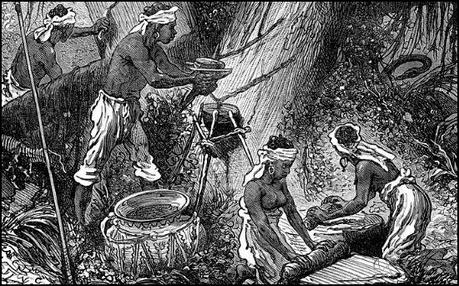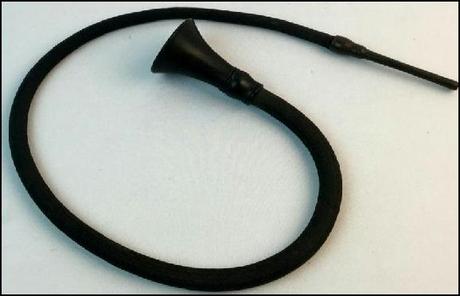
extracting the sap
The words, from the Malay, translate literally as latex of Sumatra, and the natives of that island in the Malaysian archipelago had been tapping their Palaquium trees for that rubbery sap for hundreds of years before European explorers took an interest. The Malays had found that gutta percha possesses what we know today as excellent thermoplastic qualities, it being a polymer, unlike other forms of rubber. This meant it was malleable when heated (even in boiling water), but crystalline and therefore strong and durable once it cooled and set. They used gutta percha to fashion relatively crude domestic utensils, knife-handles and walking-sticks.When the Europeans seized upon it in the 18th and 19th centuries they recognised a material with properties that would allow them to manufacture a range of both extruded and moulded products at reasonable working temperature, for gutta percha latex did not require vulcanising as other types of latex do. In the 1840s, the Gutta Percha Company was founded in Stratford, East London, by Bewley and Hancock. It imported raw gutta percha by sea from Malaya and fashioned it into a wide range of items from tubular insulation for cables to bottle-stops, jewelry and jewelry boxes, ornate picture frames (see below), rims for spectacles, chess-pieces, clocks, animal figurines, and even furniture, as well as those canes and walking-sticks much as the Malays had done, but in more refined detail and in commercialised industrial quantities.

gutta-percha picture frame
Of course other companies manufactured products from gutta percha as well, not just in Britain but on the continent and in the USA, making the usual moulded ornamental artefacts such as canes and walking-sticks, figurines, mirror and picture frames, furniture, handles for cutlery and umbrellas, jewellery, lamp-stands, hearing trumpets (again, see below) and tea-trays, plus a few more surprising items including dildos and golf balls (and the less said about the last two of those, the better).Gutta percha then became a well-known phrase in everyday use in many European languages until the product began to be superseded in the 20th century by more modern, synthetic materials such as Bakelite, Nylon, Perspex and a whole range of polys - polypropylene, polystyrene and polyvinyl chloride (PVC). Its modern usage is now almost entirely in the dental sector, as a filling material for root canal work.
What I find most fascinating is the way that such words come into and pass out of currency with time and technological advances. I'd never heard of gutta percha before a few weeks ago, and I suspect the same is true for many of you reading this, and yet a hundred years ago pretty much everyone would have known what it was, along with drugget (a coarse fabric floor covering), heliograph (a solar morse messaging device), jipper (meat broth or dripping) and teagie (a tea gown).
What words or phrases from our own lifetimes are set eventually for the same curious obscurity? How about cassette, cheque, lorgnette, scrumping, tax disc, twin tub or zozzled? Who knows? That's the frustration of the future. It doesn't speak to us very clearly.

gutta-percha hearing trumpet
Which leads me on to this latest extrusion from the imaginarium, a Malay monolog perhaps...GildedSpeak up and plain if you will. I grow a trifle deaf.I tire of living with this insufferable heat. The wax,you know, so thick and sticky with it. Like glue ear
when I was a boy. Talk straight into this trumpet asit's meant to magnify the sound. Though damned ifit makes much difference. Tell why do they refer to
my wife as Madame Ormolu? I clearly heard it said.And winding up was mentioned too. Is she aware? Iwould know but dare not ask her to her face for fear
of causing some distress. A harmless joke you think?Or does such disrespect signify a problem I must dosomething about? It's a tricky, taxing mess. So speak
and plain if you will. I grow a trifle vexed. Also doesregular as clockwork mean anything to you? I tire ofliving with this insufferable heat. Give me some clue.
Thanks for reading, S ;-) Email ThisBlogThis!Share to TwitterShare to Facebook
